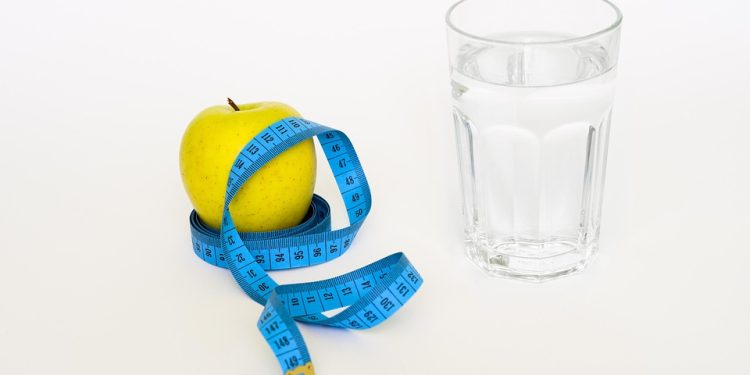Understanding the Calorie Deficit: Your Path to Weight Management
Embarking on a weight management journey often involves understanding the concept of a calorie deficit. It’s a fundamental principle, yet it can seem complex. This guide breaks down the calorie deficit, explaining what it is, how it works, and how you can safely and effectively implement it into your lifestyle.
What is a Calorie?
Before diving into a calorie deficit, let’s define a calorie. A calorie is a unit of energy. We obtain energy from the food and drinks we consume. Our bodies use this energy to perform essential functions like breathing, thinking, and moving. Different foods contain different amounts of calories depending on their macronutrient composition (proteins, carbohydrates, and fats).
The Energy Balance Equation: Calories In vs. Calories Out
Weight management hinges on the energy balance equation:
- Calories In: The calories you consume through food and beverages.
- Calories Out: The calories your body burns through basic bodily functions (basal metabolic rate or BMR), physical activity, and the thermic effect of food (the energy your body uses to digest food).
When you consume the same number of calories as you burn, you maintain your weight. When you consume more calories than you burn, you gain weight. Conversely, when you burn more calories than you consume, you lose weight. This is the principle behind a calorie deficit.
Creating a Calorie Deficit: The Key to Weight Loss
A calorie deficit occurs when you consistently consume fewer calories than your body burns. This forces your body to tap into its stored energy reserves (primarily fat) to make up the difference, leading to weight loss.
How Many Calories Should You Cut?
A commonly recommended guideline is to create a deficit of 500-750 calories per day to lose about 1-2 pounds (0.45-0.9 kg) per week. This is generally considered a safe and sustainable rate of weight loss for most individuals. However, individual needs can vary, and it’s always best to consult with a healthcare professional or registered dietitian for personalized advice.
Example: If your body burns 2500 calories per day, consuming 2000 calories would create a 500-calorie deficit.
Methods for Achieving a Calorie Deficit
There are two primary ways to create a calorie deficit:
- Dietary Adjustments: Reducing your calorie intake through mindful eating and portion control.
- Increased Physical Activity: Burning more calories through exercise and movement.
The most effective and sustainable approach often involves a combination of both.
Strategies for Reducing Calorie Intake
Making strategic dietary changes can significantly contribute to a calorie deficit without feeling deprived.
Focus on Nutrient-Dense Foods
Prioritize foods that are high in nutrients but relatively low in calories. These include:
- Fruits and Vegetables: Packed with vitamins, minerals, and fiber, promoting satiety.
- Lean Protein: Helps preserve muscle mass during weight loss and keeps you feeling fuller for longer. Examples include chicken breast, fish, beans, and lentils.
- Whole Grains: Provide sustained energy and fiber. Choose brown rice, quinoa, and whole-wheat bread over refined grains.
Practice Portion Control
Be mindful of your portion sizes. Using smaller plates, measuring your food, and avoiding mindless snacking can help you manage your calorie intake effectively.
Limit Processed Foods, Sugary Drinks, and Unhealthy Fats
These foods are often high in calories and low in nutrients, contributing to weight gain. Reducing your intake of processed foods, sugary drinks, and foods high in saturated and trans fats can make a significant difference.
Read Food Labels Carefully
Pay attention to the calorie content and serving sizes listed on food labels. This will help you make informed choices about the foods you consume.
Hydrate Adequately
Drinking plenty of water throughout the day can help you feel full and reduce your appetite. Sometimes, thirst can be mistaken for hunger.
Incorporating Physical Activity to Burn More Calories
Increasing your physical activity level is another crucial component of creating a calorie deficit.
Cardiovascular Exercise
Activities like running, swimming, cycling, and brisk walking are excellent for burning calories. Aim for at least 150 minutes of moderate-intensity or 75 minutes of vigorous-intensity cardiovascular exercise per week.
Strength Training
Building muscle mass through strength training can increase your metabolism, helping you burn more calories even at rest. Include strength training exercises that target all major muscle groups at least twice a week.
Find Activities You Enjoy
The key to long-term success is finding activities you enjoy and can consistently incorporate into your routine. Whether it’s dancing, hiking, or playing a sport, choose activities that keep you motivated and engaged.
Increase Daily Movement
Look for opportunities to incorporate more movement into your daily life. Take the stairs instead of the elevator, walk during your lunch break, or stand while working. These small changes can add up over time.
Tracking Your Progress and Making Adjustments
Monitoring your progress is essential for ensuring that your calorie deficit is effective and sustainable.
Keep a Food Journal
Tracking your food intake can help you identify areas where you can make adjustments to reduce your calorie consumption. There are many apps and online tools available for tracking calories and macronutrients.
Monitor Your Weight and Measurements
Weigh yourself regularly (e.g., once a week) and take measurements of your waist, hips, and thighs. This will help you track your progress and identify any plateaus.
Adjust Your Calorie Intake and Exercise Routine as Needed
As you lose weight, your body’s energy needs may decrease, requiring you to adjust your calorie intake or increase your physical activity level to maintain a calorie deficit. Be patient and flexible, and don’t be afraid to experiment to find what works best for you.
Potential Downsides and Precautions
While a calorie deficit is generally safe, it’s important to be aware of potential downsides and take necessary precautions.
Extreme Calorie Restriction
Avoid drastically reducing your calorie intake, as this can lead to nutrient deficiencies, muscle loss, and a slower metabolism. A moderate and sustainable calorie deficit is always the best approach.
Nutrient Deficiencies
Ensure that you’re consuming a balanced diet rich in essential nutrients, even while restricting calories. Consider taking a multivitamin or mineral supplement if necessary, but consult with a healthcare professional first.
Muscle Loss
To minimize muscle loss during weight loss, consume adequate protein and engage in regular strength training.
Fatigue and Irritability
Some people may experience fatigue, irritability, and difficulty concentrating when in a calorie deficit. These symptoms are usually temporary and can be managed by ensuring adequate sleep, hydration, and nutrient intake.
Consult with a Healthcare Professional
If you have any underlying health conditions or concerns, consult with a healthcare professional or registered dietitian before starting a calorie-restricted diet. This is especially important for individuals with diabetes, heart disease, or eating disorders.
Conclusion: A Sustainable Approach to Weight Management
Creating a calorie deficit is a fundamental principle of weight loss. By understanding the energy balance equation and implementing sustainable dietary and lifestyle changes, you can achieve your weight management goals safely and effectively. Remember to focus on nutrient-dense foods, practice portion control, increase your physical activity level, and track your progress. Most importantly, be patient with yourself and celebrate your successes along the way. Sustainability and gradual changes are key for long-term results and overall well-being. Consult with a healthcare professional or registered dietitian for personalized guidance.
Frequently Asked Questions (FAQs) About Calorie Deficits
Here are some common questions people have about calorie deficits:
Q: How quickly can I expect to lose weight with a calorie deficit?
A: A safe and sustainable rate of weight loss is typically 1-2 pounds (0.45-0.9 kg) per week. However, individual results can vary depending on factors such as your starting weight, metabolism, and activity level.
Q: Is it possible to lose weight without counting calories?
A: Yes, it is possible, but it requires a very mindful approach to eating. Focusing on whole, unprocessed foods, practicing portion control, and listening to your body’s hunger and fullness cues can help you create a calorie deficit without meticulously tracking calories.
Q: What happens if I don’t create a calorie deficit?
A: If you consistently consume more calories than you burn, you will gain weight. If you consume the same number of calories as you burn, you will maintain your weight.
Q: Can I speed up my weight loss by creating a larger calorie deficit?
A: While creating a larger calorie deficit may lead to faster weight loss in the short term, it’s generally not recommended, as it can be unsustainable and lead to negative health consequences such as nutrient deficiencies, muscle loss, and a slower metabolism. A moderate calorie deficit is always the preferred approach.
Q: What if I’m not losing weight despite being in a calorie deficit?
A: There are several possible reasons why you might not be losing weight despite being in a calorie deficit. These include:
- Inaccurate calorie tracking: You may be underestimating your calorie intake or overestimating your calorie expenditure.
- Water retention: Fluctuations in hormones, sodium intake, or exercise can cause water retention, masking weight loss.
- Medical conditions: Certain medical conditions, such as hypothyroidism or polycystic ovary syndrome (PCOS), can make it more difficult to lose weight.
- Medications: Some medications can contribute to weight gain or make it harder to lose weight.
- Metabolic adaptation: Over time, your metabolism may slow down in response to calorie restriction, requiring you to adjust your calorie intake or exercise routine.
If you’re concerned about your weight loss progress, consult with a healthcare professional or registered dietitian to identify any underlying issues and develop a personalized plan.
Q: Is it okay to have cheat meals or days while in a calorie deficit?
A: Occasional cheat meals or days can be incorporated into a calorie deficit without derailing your progress. The key is to not overdo it and to get back on track with your healthy eating habits as soon as possible. A balanced approach that allows for some flexibility can help you stay motivated and prevent feelings of deprivation.
Q: How long should I stay in a calorie deficit?
A: The duration of your calorie deficit will depend on your weight loss goals and individual circumstances. Once you reach your desired weight, you can gradually increase your calorie intake to maintenance levels, while continuing to focus on healthy eating habits and regular physical activity to maintain your weight loss.
Q: Can I build muscle while in a calorie deficit?
A: Building muscle while in a calorie deficit can be challenging, but it is possible, especially for beginners or those with higher body fat percentages. Consuming adequate protein and engaging in regular strength training are crucial for preserving and building muscle during weight loss.
Q: What are some healthy snack options for a calorie deficit?
A: Some healthy snack options for a calorie deficit include:
- Fruits and vegetables (e.g., apple slices with peanut butter, baby carrots with hummus)
- Greek yogurt with berries
- Hard-boiled eggs
- A handful of nuts or seeds
- Air-popped popcorn
- Protein shakes












